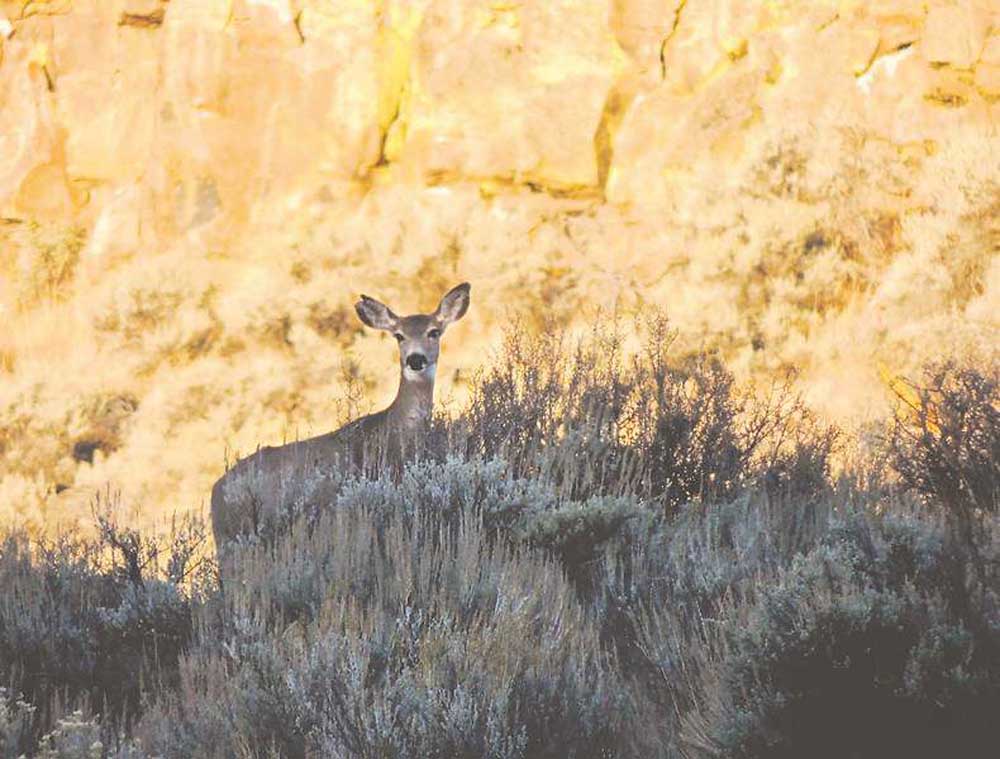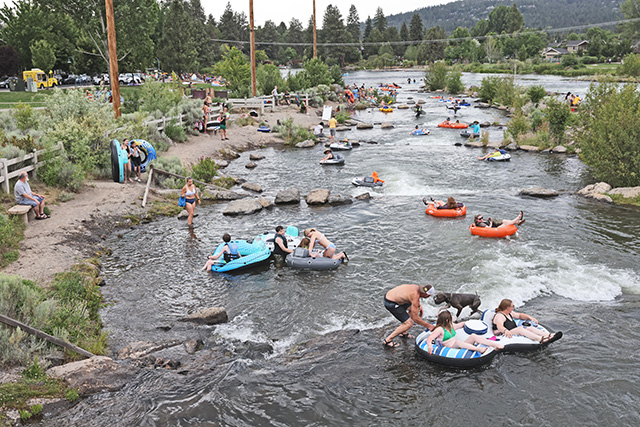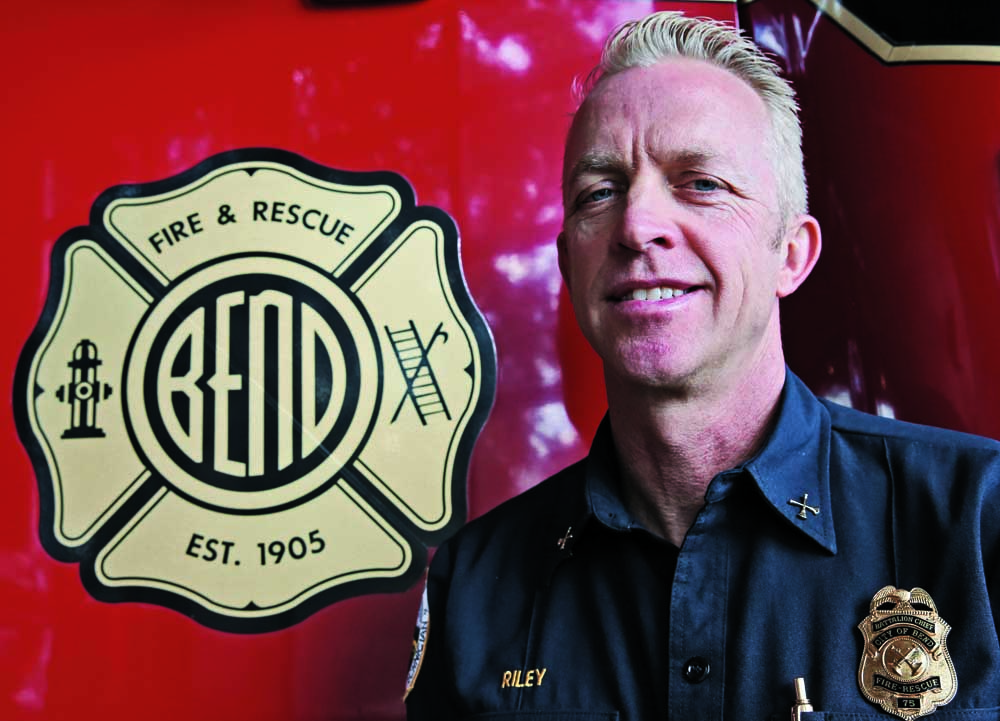Taking a buck in cattle country
Published 5:00 am Wednesday, October 23, 2013

- An Eastern Oregon mule deer doe watches from a sage brush hilltop.
There were five bucks and a few does together when we spotted them. The biggest of the bucks was a four-point, and we wanted a better look. They were near the fence line, but we were on public land and two other hunters were in a truck on the road above the deer. Chances were good they didn’t see the deer, although they were only 40 yards away.
I folded the spotting scope and we eased along the fence-line road, took a left on the dirt road and entered the trees. I trusted to 16-year-old Hayden’s instincts. He knew the land and I didn’t. But I knew what I was looking for in a buck, and this might be the one.
If he had said, “Eight-ball, corner pocket,” he couldn’t have called it any closer. We walked right in on them, and everywhere we looked we saw antlers. Three of the bucks were forked horns or two-by-threes; the biggest: a nice three-point and a large-bodied four-point with crab-claw front forks. Two nice bucks, broadside, but neither was the buck I had come for.
Hayden had to go back to school and football. I had deadlines. All week, I thought about the ground we had covered. There were a lot of spots where a buck could hide, little basins, groves of mountain mahogany, folds in the ground where a big buck could post a little buck as a lookout. There was one spot I couldn’t quit thinking about.
Ancient floods had carved a narrow canyon. Over the centuries, wind, water and ice had done the rest and had left weird rock formations, little caves and lichen-encrusted boulders. To the ranch kids of the area, the canyon came to be known as the “Dragon Rocks.”
On one side, the forest sloped down to sage; the other side was a barren, grassy slope with a few old junipers and a grove of mountain mahogany. Here, there was bitterbrush and other browse. Here, there was shade. Water was close, within a quarter-mile. A buck could eke out an existence here. But this spot, more than any other, seemed a place of refuge.
Hayden had said our best bet was to work the edges on opening weekend and then start tapping the better spots as the pressure moved deer around. He was thinking of a huge canyon he called “Hole in the Ground.” I was thinking smaller. All it takes is enough cover to hide one deer. One good deer.
Friday morning, I had a sense that if I was going to get a buck, I had to leave town quickly, drive the 3 1/2 hours to camp and ease into the canyon an hour before dusk.
It was a half-mile hike from the road to the sidehill of the canyon. The pine trees cast long shadows in the bowl on the north side of the ridge. I slipped from tree to tree, then, at the top, scrolled over and glassed as each new fold in the ground opened up.
When I began to drop down the other side, I started to see cattle. Beef. Black Angus: the wild card I hadn’t counted on. There had to be 50 cows between me and the mahogany. If there were cows, would there be deer? I weighed my options. If the cows stampeded, it would alert the deer. The cattle might have pushed the deer out. Then I remembered. My best mule deer bucks have all come from cattle country. The deer and the cows are there for the same reasons: feed, water, salt, shade.
“Hello, Bossy. Good looking calf you got there.”
A calf bawled. A heifer rolled her eyes and ran off a few yards and looked back. “Easy, big girl.” A stampede would kill my chances.
From here I could see the tops of the mahogany. Off the hogback, in the canyon, was a line of junipers. Through the trees, I ghosted from shade to shade.
One last juniper. When I reached it, I saw a gray shape against the green of the trees and the silver of the sage. I saw antlers shine in the evening light. A quick look with the binocular showed me a fork well above the tops of its ears.
There was time to range it — 252 yards. There was time to take a picture. There was time to take a rest on a juniper limb, to break away a couple of twigs, to dial the scope to 7-power.
Once upon a time, this Winchester Model 70 belonged to John Nosler, then it belonged to Ed Neff, one of John’s longtime employees. There was a 150-grain Nosler Partition in the chamber. I pushed the safety through to “fire” and found the buck and the crosshair, let them drift into perfect alignment and pressed the trigger.
Old John had spoken. A four-point mule deer lay in the mahogany. Now, the important thing was to turn this fine buck into a supply of winter meat. That’s when I remembered my knife. It was still in the truck, a half-mile away.







